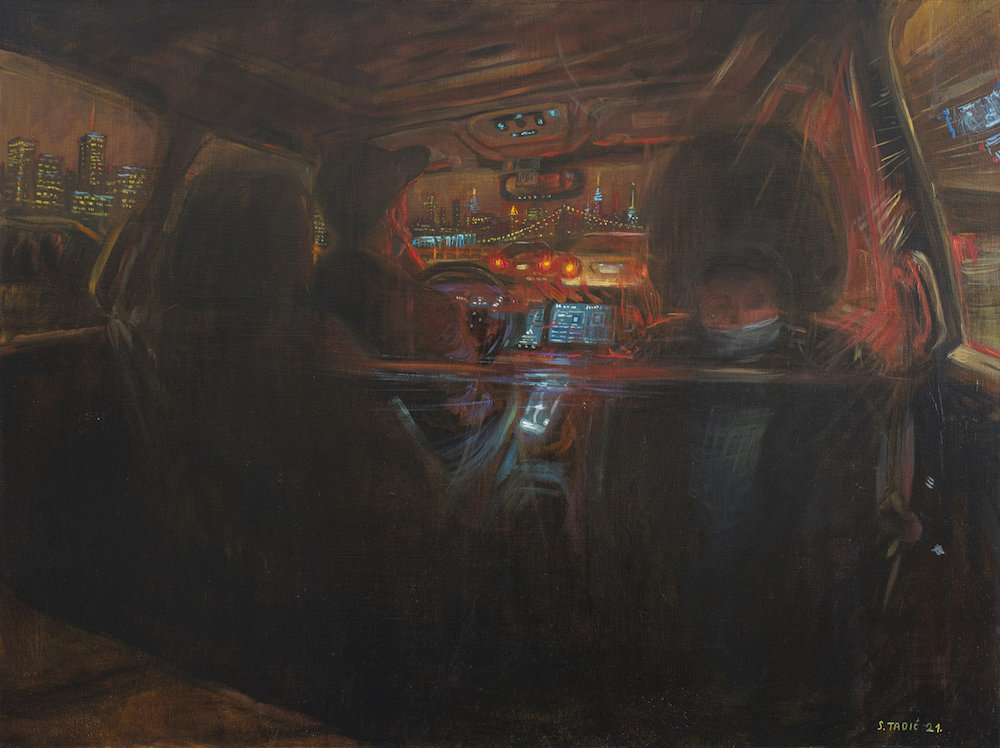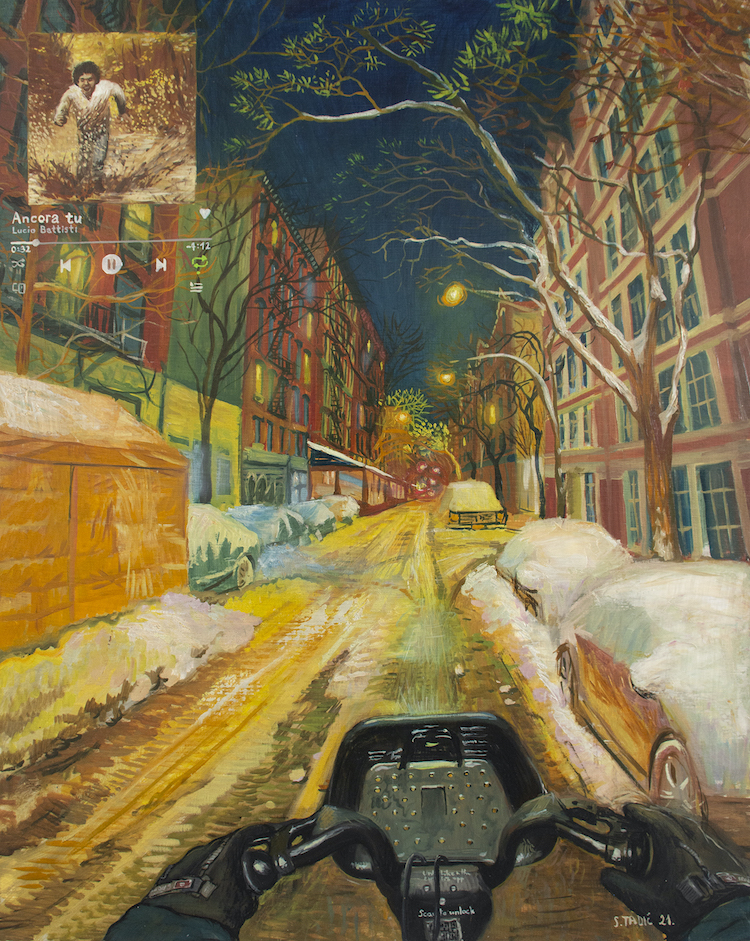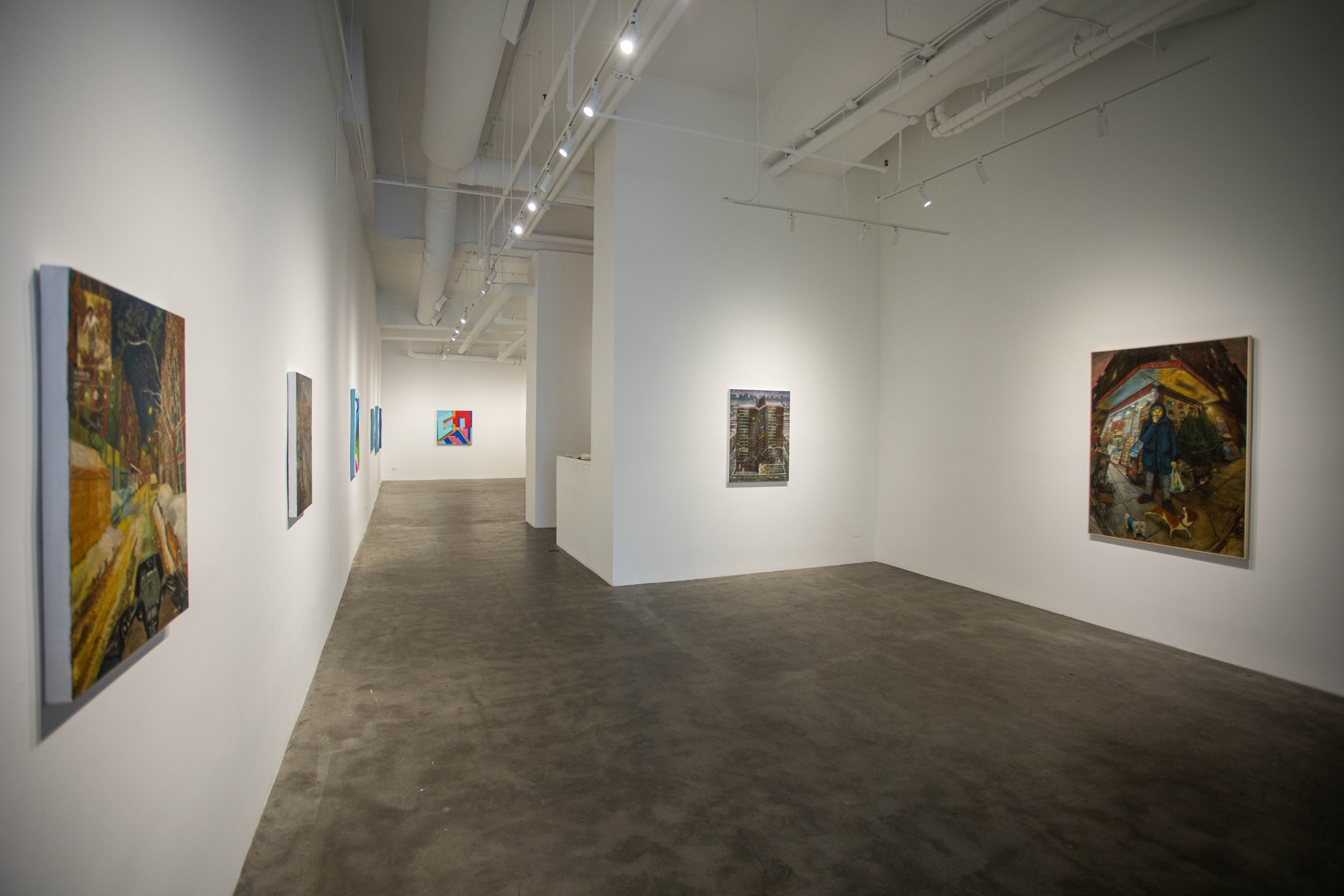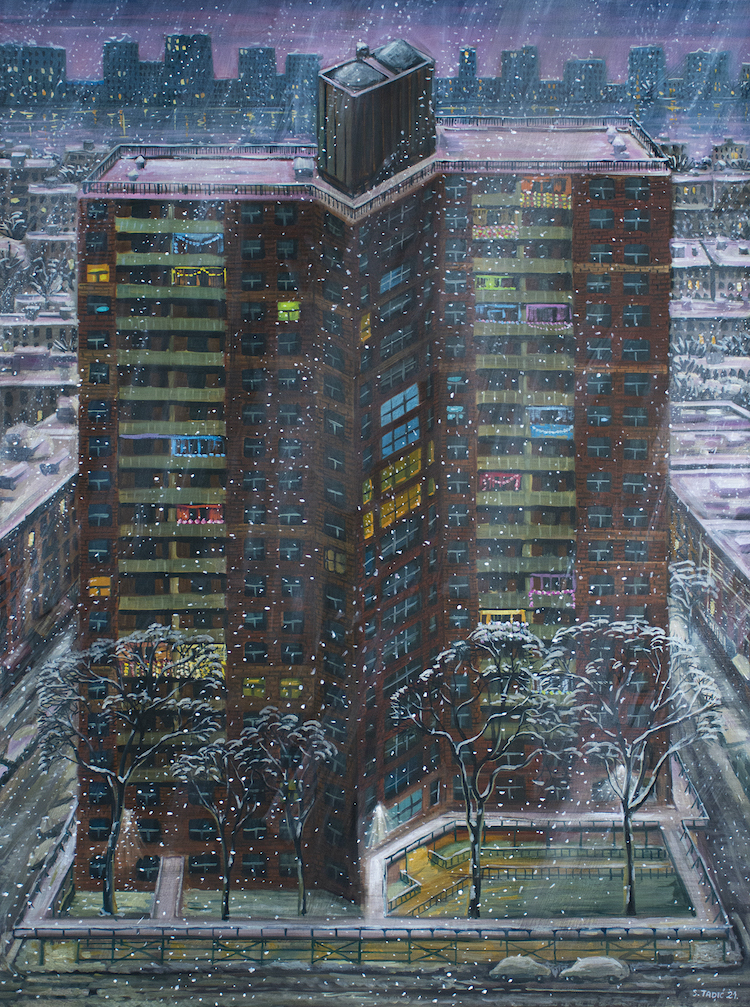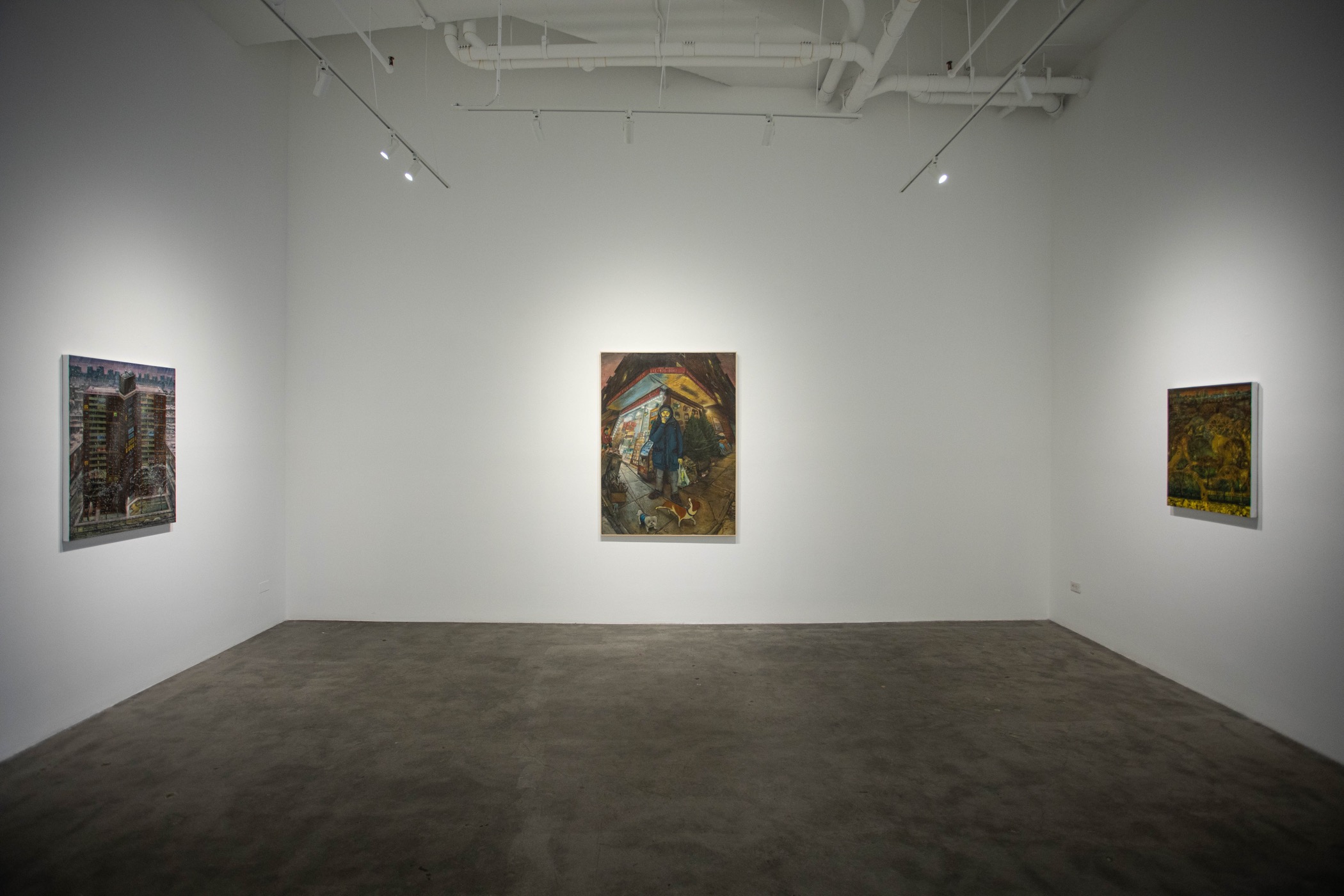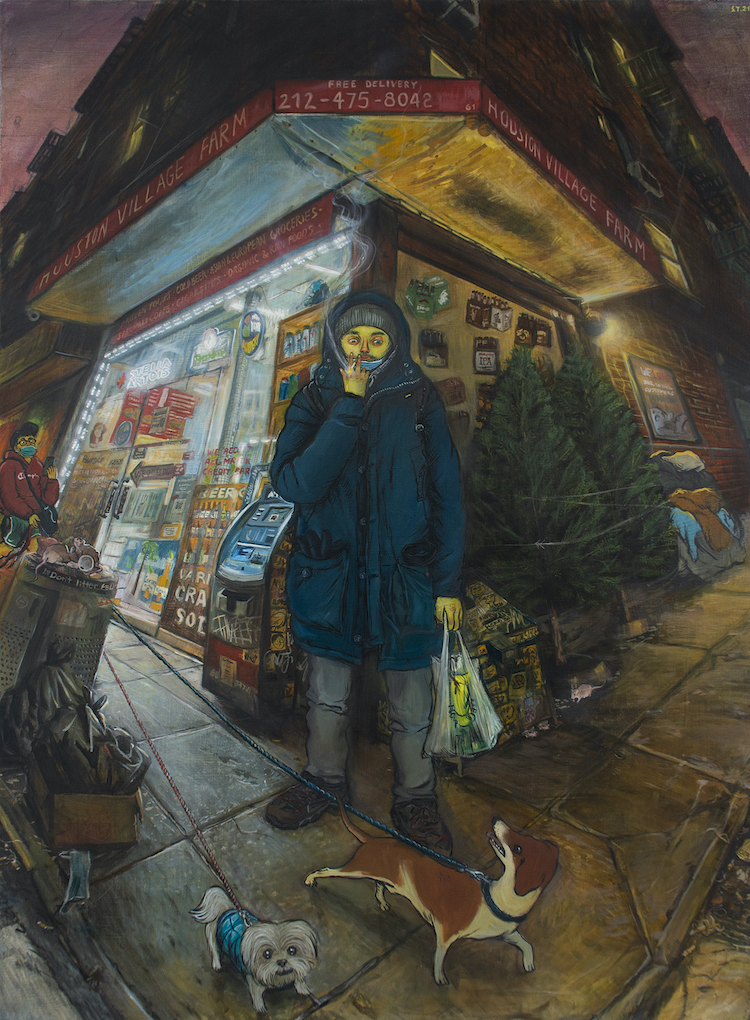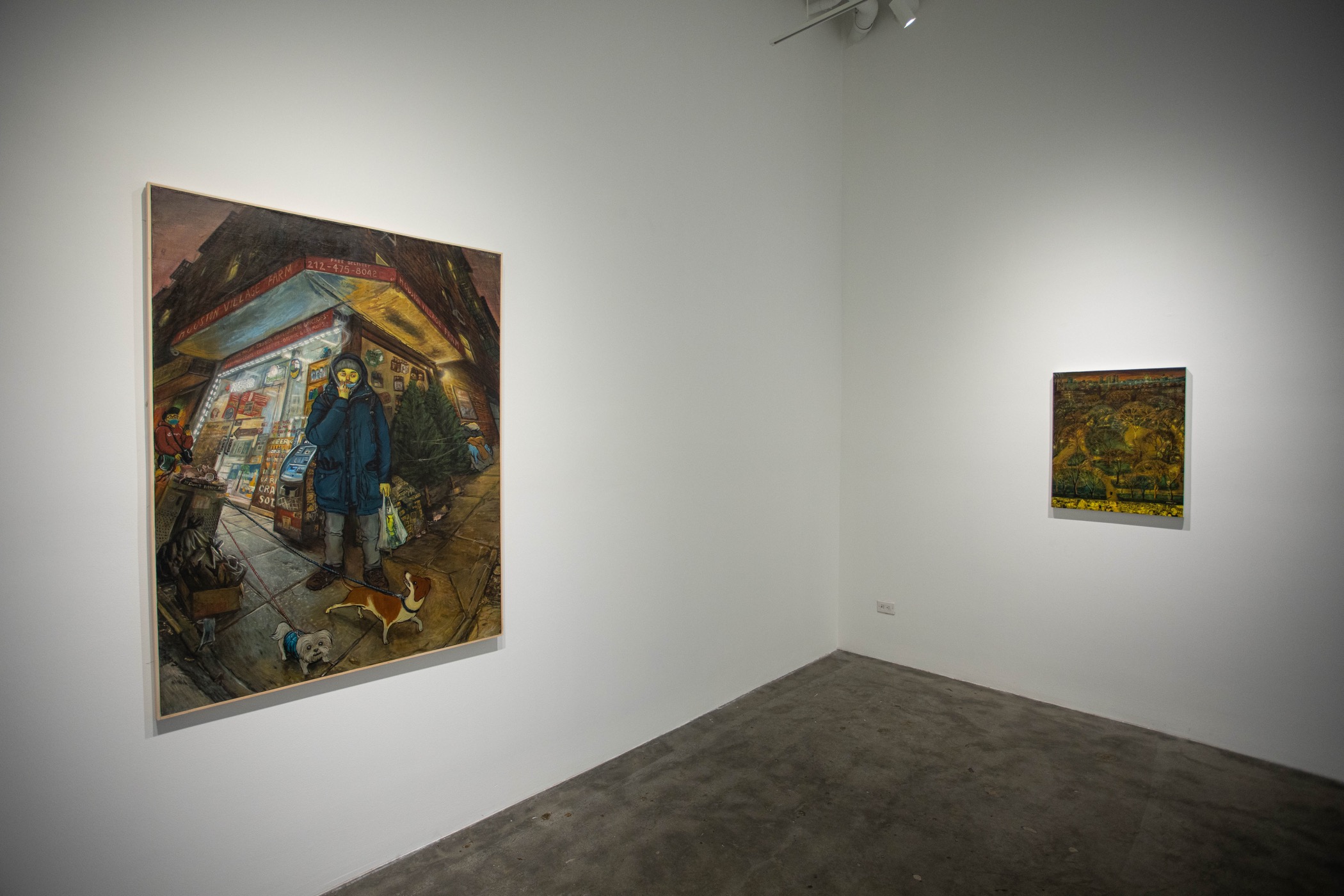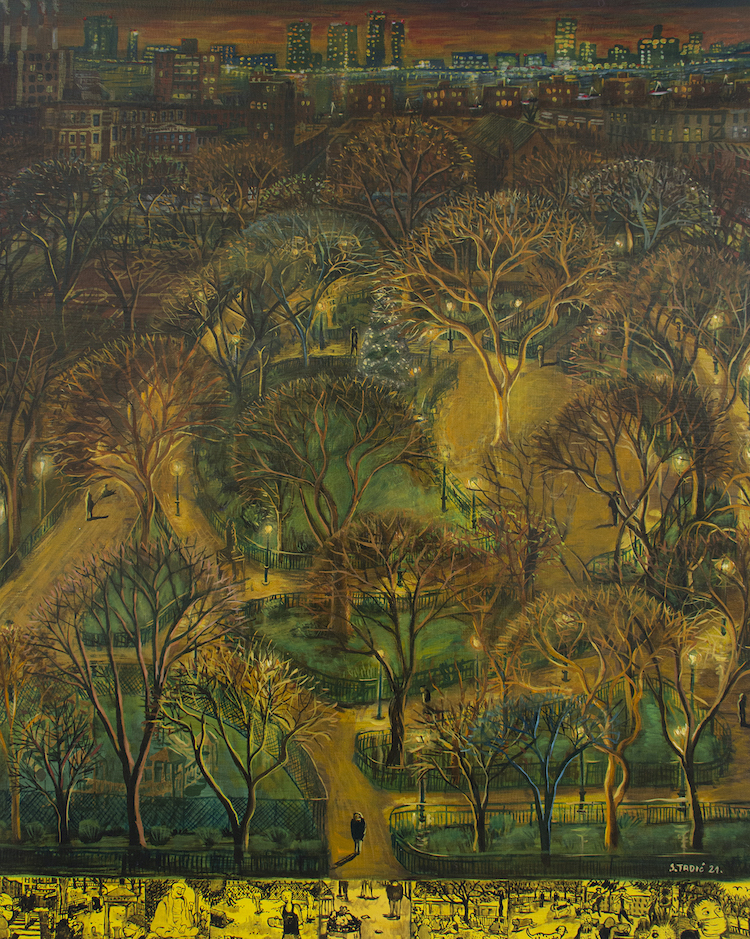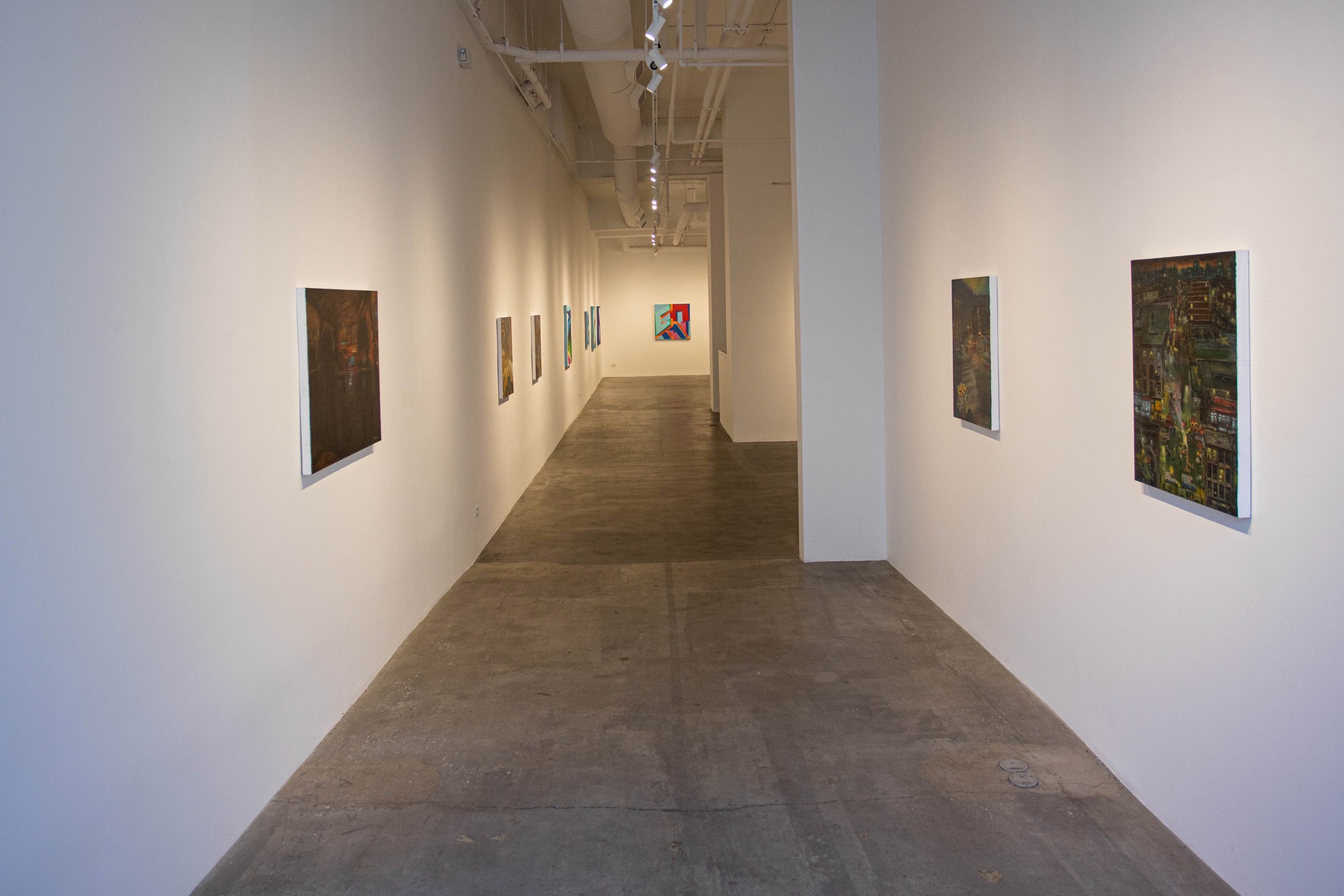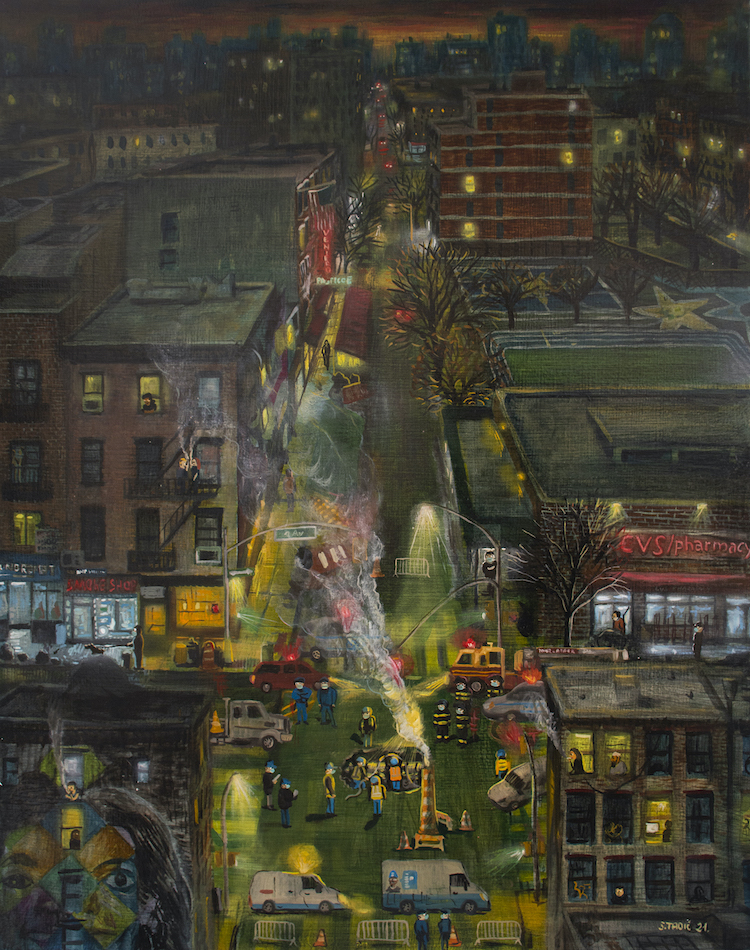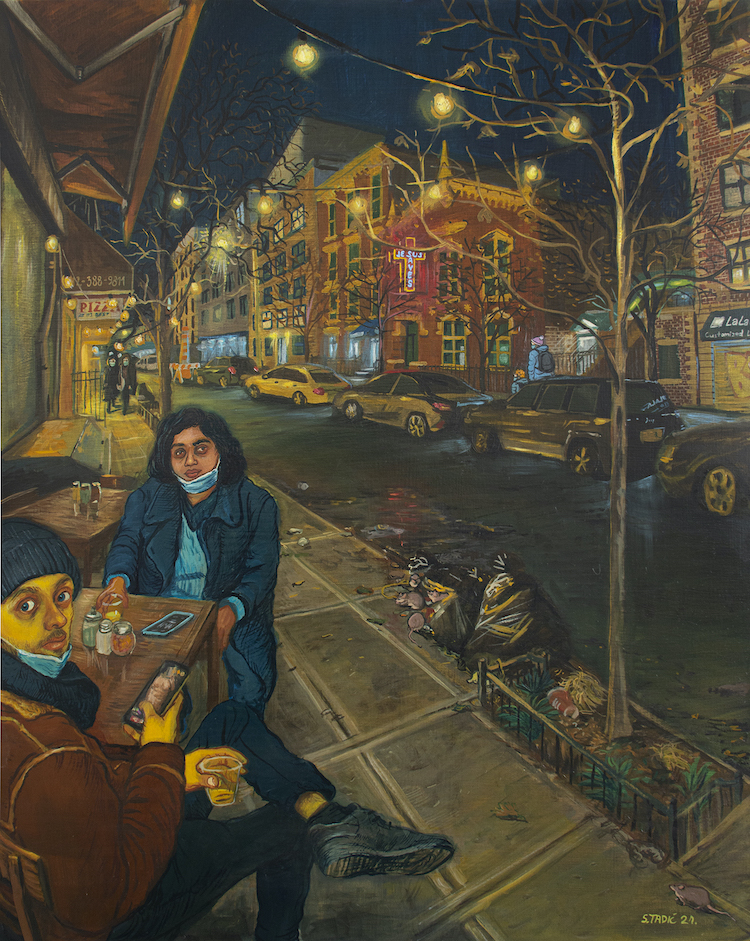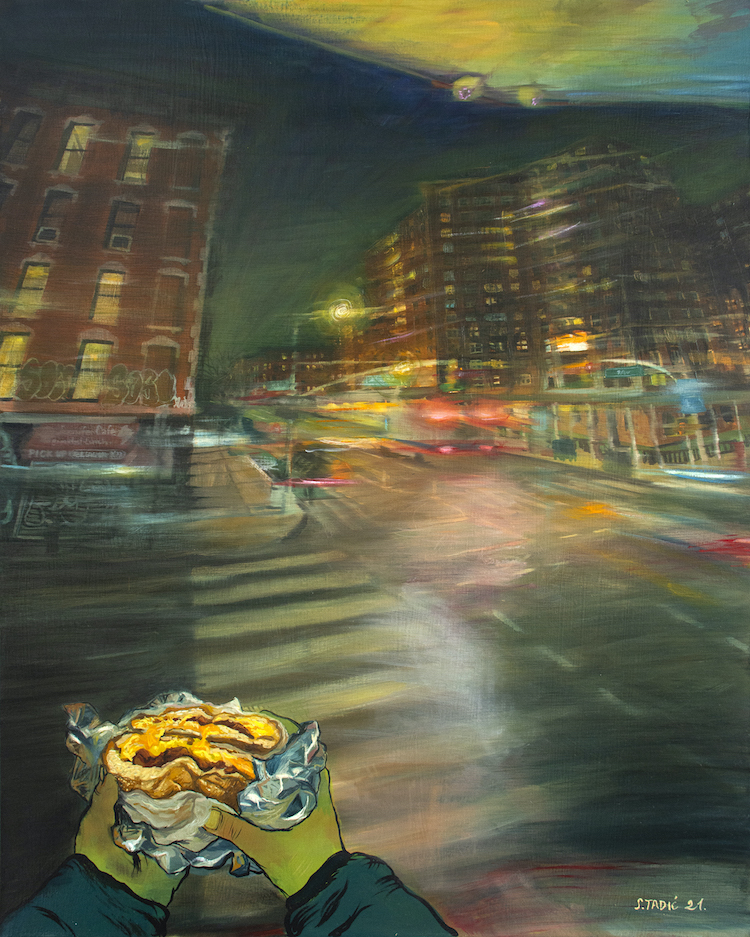Mucciaccia Gallery in New York is currently running additional two weeks of Intersections, two solo projects introducing the artists’ perceptions of the world seen through very diverse lenses. The presentation is contrasting Kati Vilim's representational geometric images which originate in abstract, often invisible parts of the world, against Stipan Tadić’s romanticized observations of his actual surrounding.
For this body of work, Tadić focused on portraying night scenes of his adopted home city, namely East Village. Looking for a subject matter that would set some boundaries but also allow for enough possibilities to explore, the nighttime felt like the perfect choice. "As a complex symbol in itself, the night setting made sense to me, as I always felt that a big part of my identity belongs to different aspects of the night," Croatian artist told Juxtapoz about his personal relationship with the subject. "Always seeing it as a kind of sub-life or unofficial side of our day-to-day lives, the time when the demons come out, I also felt that about New York. I was fascinated by the city lights and the secret life that comes out when everyone is asleep." Aside from the peculiar atmosphere that such settings evoke, the technical challenges of capturing the glimmering lights and their reflections provided a whole new level of appreciation for this theme. Semi-concealed and imbued with suggestive light, the everyday, actual moments from the artist's life are becoming counterbalance to the uncertainty of the past year. Simple actions as grabbing a late-night snack, groceries at the local deli, or a curbside drink with friends (Bacon Egg and Cheese, On The Corner, Jesus Saves, both 2021), cityscape imagery (Tompkins, Intersection, and Winter Bike Ride, all 2021), or taking an Uber ride (Uber, 2021), become darkened flashes of normality in otherwise alternated everyday actuality.
Starting with a phone photo, Tadić proceeds to elaborate his visuals with doodles, sketches, and additional Renaissance and medieval references. And while snapshots in their essence, the images are built by including different elements that the artist notices as he experiences these sites multiple times a day/week. "I can add those things to the scene and make it not look just like a single photo, but an accumulation of time in a single space. I also make a lot of perspectival sketches and use those as the basic framework of my compositions," the artist explained the methods through which these rich images are built. These multiple exposures inform the intricacy and the abundance of details included in a single image, mixing both the comics-like aesthetics and approach to constructing a scene, along with reinsurance or medieval ways of laying out the perspective, for example. Such an approach opens up possibilities for the layered portrayal of emotions conveyed as well as different ways and layers of reading the image. "I love when a work of art can be read and looked at for a long time, from afar and from up close. In this way, when a spectator looks at the work, they can read it and go through the painting and jump from the comical to the sad, the personal to the objective, etc, and get a whole atmosphere from that experience while zooming in and out of the painting," the artist describes these familiar-looking scenes which seamlessly blend his appreciation for Brueghel, the German expressionists, as well as underground comics from the 60s. —Sasha Bogojev

